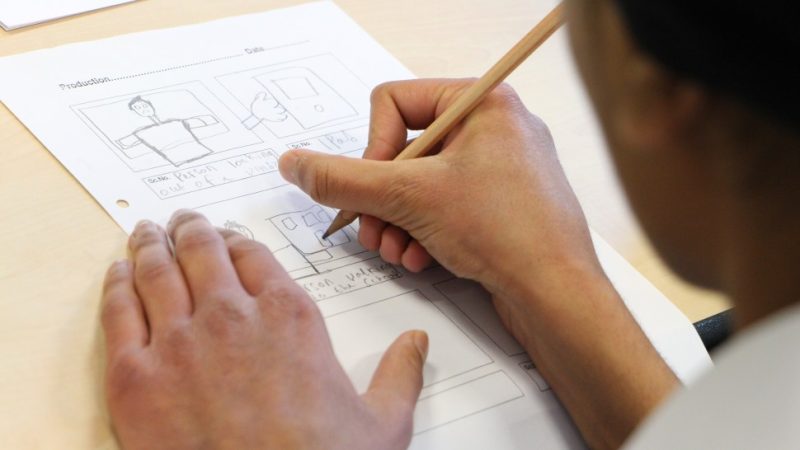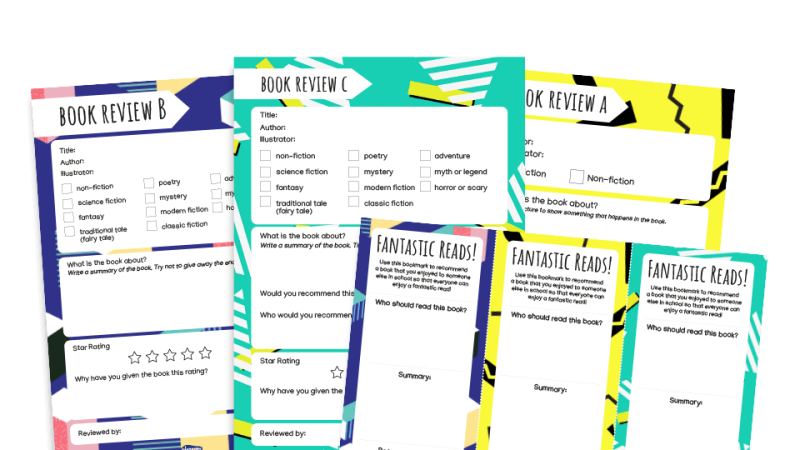KS2 book topic – The Dragon Snatcher

A kitten might be cute, a rabbit cuddly, but they’re both damp squibs when it comes to igniting children’s story writing, says Carol Sattherthwaite. Compared to hatching a pet dragon, anyway…

Download this book topic as a free PDF here.
The Dragon Snatcher by MP Robertson has everything you need to help children write a fantasy adventure story. In combination with The Egg – the first story in this fabulous series – it opens up all kinds of opportunities to link with science, history and art as part of a project on Castles and Dragons. What better way to spend half a term?
At the start of The Egg, our hero George finds an enormous egg under his mother’s favourite chicken. Having carefully helped it to hatch, he becomes the proud ‘mother’ of a baby dragon, which he has to train in all sorts of ‘dragony’ ways – including how to distress a damsel.
Eventually, however, George begins to realise that his dragon needs a family of his own, and at the end of the book we leave him feeling rather sad.
Happily, at the start of The Dragon Snatcher, George is reunited with his beloved friend and taken on an important mission to defeat the Dragon Snatcher (an evil, dragon-egg collecting wizard).
Finding a way into the villain’s castle, he discovers rows and rows of frost-covered dragon eggs and overhears the wizard’s plan: he is searching for the final egg that will complete his collection.
Our brave duo pursue the wizard over the icy mountain tops and use a ‘secret weapon’, George’s trusty blanket, to rescue the egg. In the end, good triumphs over evil – the wizard’s spell is broken and the frozen dragon eggs start to hatch.
You could use the two stories in a multitude of ways, but here’s one route you might follow to plan your own journey.
1 | The adventure begins
Before reading either book with the class, begin by hiding a very large egg somewhere in the school grounds or, if you really want to create a sense of mystery, film a video clip of someone – or something – depositing the egg in the dead of night.
You will need a way to alert the class to the egg’s presence, so you could create a ‘front page’ for your local newspaper and have it delivered to the classroom with the headline: ‘Mysterious egg found in school playground’.
Create even more excitement by responding to a phone call, supposedly from the press office, in front of the children.
Develop reading skills such as prediction by asking children how they think the egg got there and who brought it, and create a shared list of their ideas. You could ask them to work in groups, selecting ideas from this list to create a role play to present to the rest of the class.
The children could then draw or write a list (a good opportunity to teach or apply bullet points) of what might be inside the egg and share their thoughts with each other.
There are numerous opportunities at this stage to hold class debates, eg should the egg should be moved or should it be hatched out? You can teach the language of discussion very easily by focusing on sentence starters such as ‘In my opinion…’ and ‘I believe that…’ You could also use an ‘agree / disagree’ game in which the opening sentence is: ‘We should crack open the egg’.
Children use “I agree with…” or “I disagree with” sentence starters and go on to give and justify their opinions.
Children should then make their final decisions about what to do with the egg. Before they do, you might want to invite a world famous egg expert (an adult in role) into the classroom so that the children can ask for advice.
An excellent ‘short burst writing’ outcome at this point would be a simple repetitive poem, starting with the line ‘Inside the egg is a…’ (eg Inside the egg is a golden gecko with scales like glowing embers).
The focus could be on alliteration, similes and developing vocabulary. See Pie Corbett’s Talk for Writing for more on this technique.
2 | The journey continues
Having gained the children’s attention, read The Egg using a text visualiser to enlarge the images on the IWB, and pause on selected pages so that children can develop understanding and practise their reading skills. For example, the page where George is sitting on the egg would be excellent for generating questions.
You could go on to use The Egg in many different ways, but, beyond work on reading skills, I have used it simply as a way of introducing George and his dragon, and a stimulus for non-fiction report writing.
Read The Dragon Snatcher next, asking questions to deepen understanding and pausing on pages that are particularly interesting.
A simple technique for helping children think more deeply about any text is the 3 Ws activity: What I’m wondering… What it reminds me of… What I’m thinking…. Having modelled the process, ask the children to do the same.
This works exceptionally well with two pages in The Dragon Snatcher – the one where George finds the dragon eggs and the one in which the wizard stares into his magical orb.
Let the children lead the discussion and talk among themselves; try to avoid asking lots of direct questions: prompting with a simple, ‘What does anyone else think?’ or ‘Does anyone have a different idea?’ is often all we need to say.
George is extremely brave to enter the castle. The children can develop empathy for him by completing a ‘Should George go into the castle?’ Conscience Alley.
Here, two lines of pupils face each other and express opposite points of views, giving their reasons for these. A child or adult walks down the middle of the lines pretending to be George, listening to both sides of his ‘conscience’ before making a decision.
George discovers different types of dragon eggs, such as The Rock Gobbler and The Horny Cave Dweller. You could ask the children to invent, draw and label their own type of dragon.
Showing a short clip of the dragon contest in Harry Potter and the Goblet of Fire will develop their imaginations further, but you will need parental permissions as it is PG-rated.
Build up a bank of words and phrases from The Dragon Snatcher and record them on a washing line (see T4W for more detail) to support pupils’ descriptive writing. Children could also role-play the battle between George and the wizard, using the new vocabulary to support this.
Another way to help children learn to write different types of sentence is to extract examples from the book and use them for quick-fire warm-up games. For example, take the line ‘Luckily, George had a soft landing in the snow.’ How else might children finish a sentence beginning with the adverb ‘Luckily’?
Ask children to think of ways they could change elements of The Great Dragon Rescue story in order to create a different tale (T4W refers to this as ‘Innovating’).
You could come up with new names for the child and the dragon; create a new bad character (perhaps a troll) and think of something other than dragon eggs that he might be collecting; and you could change the way the problem is resolved (eg a spell competition).
Once you have planned and written an altered version of the story together as a class, the children can write their own magical adventures. These can be added to a class book to go in the reading area, or be recorded as a podcast.
3 | A guide to dragons
You could easily continue to develop the theme of dragons by using both stories as a stimulus for non-chronological report writing.
Using pages from The Egg, ask the children what they think dragons need in order to survive, then create a spider diagram, eg somewhere to sleep, something to eat, etc.
Expand on this list and ask the children to give each ‘need’ a category, eg diet, habitat, etc. Teach the children how to write a simple report text on a type of dragon (The Fire Dragon, for example) which they will learn to recite orally by heart.
This text needs to include the types of sentences and features found in reports, eg Fire Dragons usually live in volcanoes, as they need to stay extremely warm.
Once children have learnt this oral text, help them change the details to describe a different type of dragon, eg The Snow Dragon.
Now plan and write a shared text together before asking the children to write their own reports, based on the dragons they have invented. If you want to find out more about this sequence, see the Talk for Writing links at the end of this article.
Other titles about George and his dragon by MP Robertson include The Great Dragon Rescue and The Dragon and the Gruesome Twosome.
Context in the classroom
Role-play area
Invent new spells and ask the children to role-play a spell competition. Alternatively, ask them to role-play a new story and include the following in the area: magical objects (such as a wand or a magical globe); dressing up clothes (for a wizard, etc.); boxes or blocks to recreate scenes.
Small world
Include story characters and materials for constructing a landscape where a magical adventure can take place.
Book area
Stock your book area with the following: stories that include dragons and wizards; stories recorded onto mp3 devices / headphones; small world figures; a storyboard (carpet tiles on the wall) with laminated story characters that can be attached with velcro; settings and story language for each part of the plot; non-fiction texts on dragons, castles and knights and prompts to support fact finding.
Writing area
Put out materials for making mini-books that contain new magical adventures. Provide report writing frames.
Beyond the page
‘Who used to live in castles?’ Visit a local castle and conduct a mini-enquiry into who lived there, how it was built, what each room was for, and the jobs each person had – including the knights.
Tell the story of St George and investigate who he was and how he became the patron saint of England.
Connect your non-chronological reports on dragons to science work on ‘Animals, including humans’. You could use report titles such as ‘Humans: what they need to survive’ or ‘Pet hamsters: what they need to survive’.
Design and make magical castles. Use clips from the Harry Potter films (showing the inside and outside of Hogwarts) for inspiration. What would be magical or special about the inside of the children’s castles?
Ask children to make 2D and 3D maps to go with their own stories.












